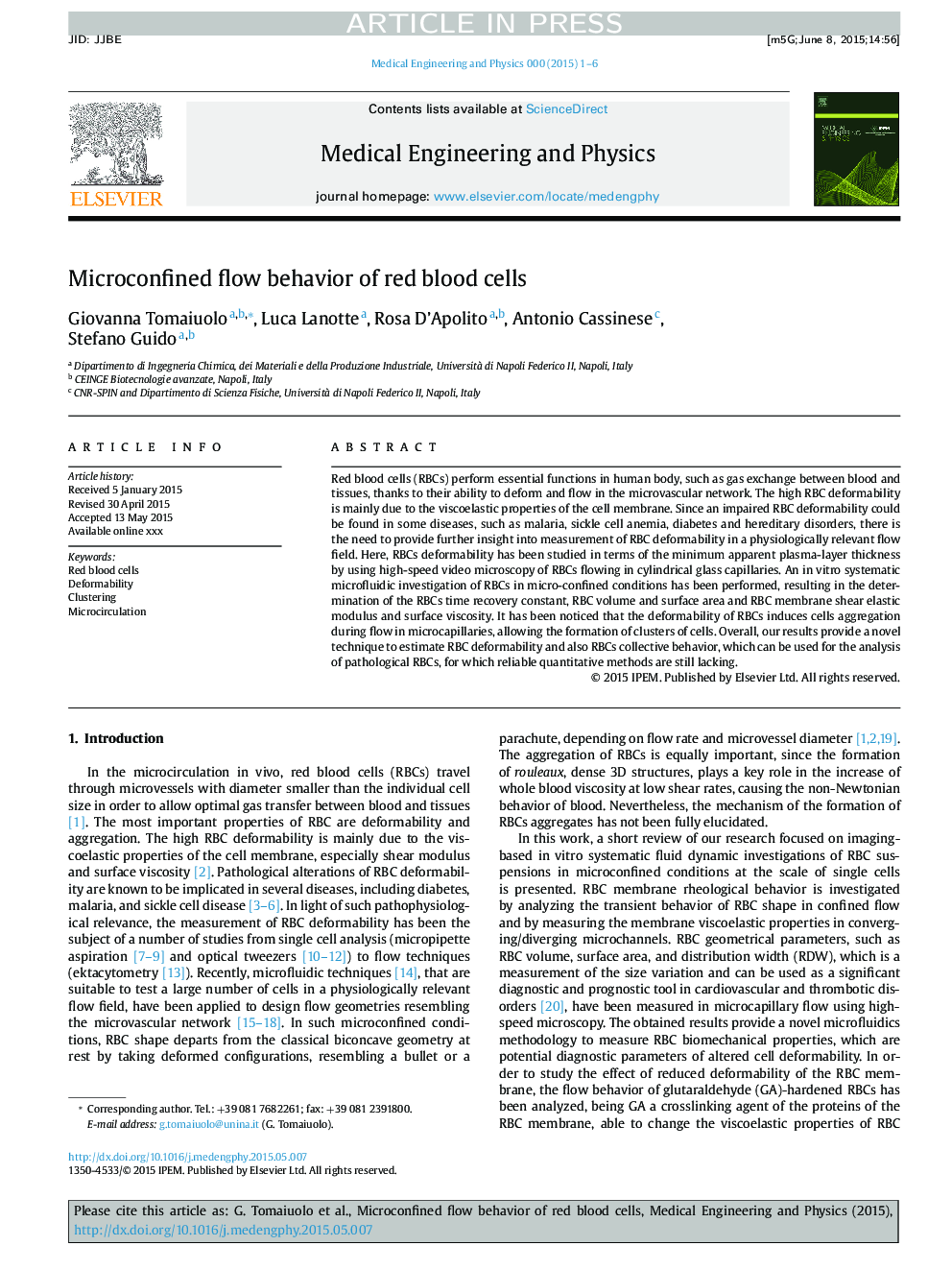| Article ID | Journal | Published Year | Pages | File Type |
|---|---|---|---|---|
| 10434998 | Medical Engineering & Physics | 2016 | 6 Pages |
Abstract
Red blood cells (RBCs) perform essential functions in human body, such as gas exchange between blood and tissues, thanks to their ability to deform and flow in the microvascular network. The high RBC deformability is mainly due to the viscoelastic properties of the cell membrane. Since an impaired RBC deformability could be found in some diseases, such as malaria, sickle cell anemia, diabetes and hereditary disorders, there is the need to provide further insight into measurement of RBC deformability in a physiologically relevant flow field. Here, RBCs deformability has been studied in terms of the minimum apparent plasma-layer thickness by using high-speed video microscopy of RBCs flowing in cylindrical glass capillaries. An in vitro systematic microfluidic investigation of RBCs in micro-confined conditions has been performed, resulting in the determination of the RBCs time recovery constant, RBC volume and surface area and RBC membrane shear elastic modulus and surface viscosity. It has been noticed that the deformability of RBCs induces cells aggregation during flow in microcapillaries, allowing the formation of clusters of cells. Overall, our results provide a novel technique to estimate RBC deformability and also RBCs collective behavior, which can be used for the analysis of pathological RBCs, for which reliable quantitative methods are still lacking.
Related Topics
Physical Sciences and Engineering
Engineering
Biomedical Engineering
Authors
Giovanna Tomaiuolo, Luca Lanotte, Rosa D'Apolito, Antonio Cassinese, Stefano Guido,
